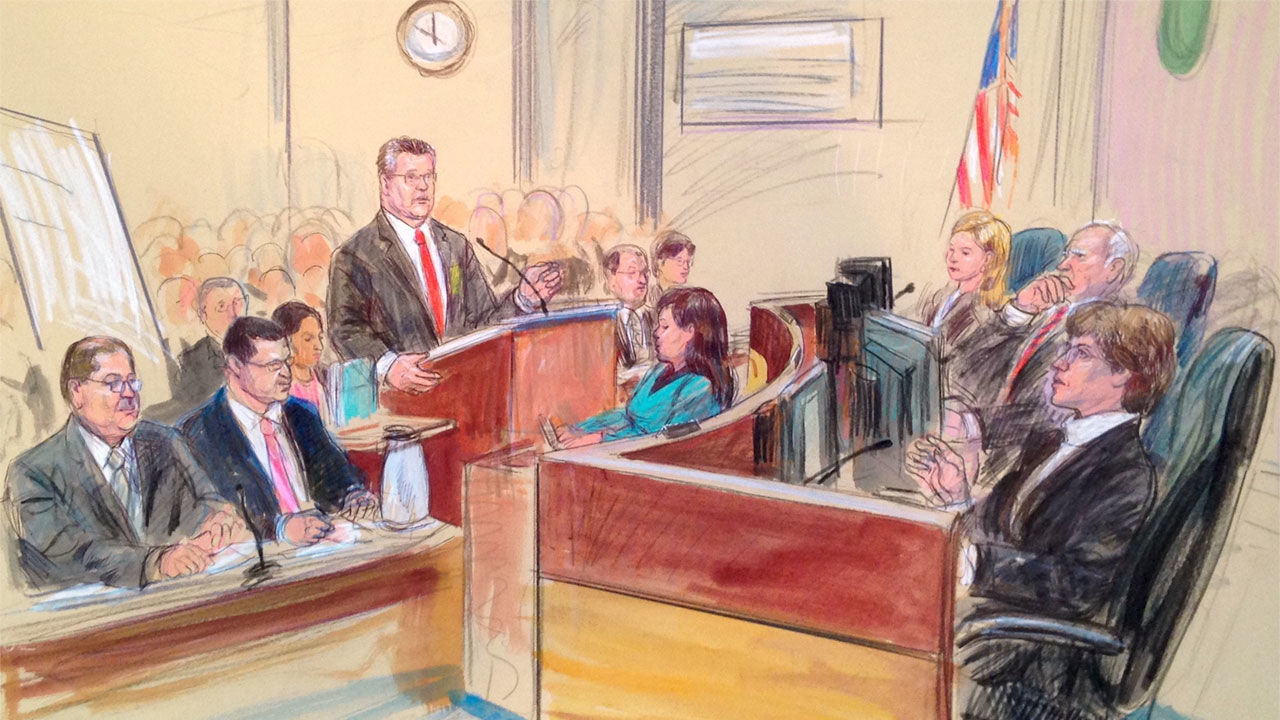ALEXANDRIA, VIRGINIA—A long line began to form an hour before the doors opened this morning for a hearing at the U.S. Patent and Trademark Office (USPTO) that would help decide the fate of the intellectual property behind the revolutionary genome-editing technology dubbed CRISPR. Even those closely following the case were surprised by the size of the crowd, which required a spillover room. “Let’s be honest, this is a patent interference hearing, not a rock concert,” said Jacob Sherkow a patent attorney at New York Law School in New York City. But with billions of dollars at stake, elite university combatants, and high-profile scientists fighting over inventorship, the CRISPR battle has turned into a drama-filled epic, and this hearing was the first time lawyers for the University of California (UC) public faced down their opponents representing the Broad Institute in Cambridge, Massachusetts. The three-judge panel allotted each side 20 minutes to argue and rebut, but it offered no decision, which left Sherkow and other onlookers reading tea leaves based on a dozen questions asked and the strength of the answers the lawyers gave.
Some have suggested Broad seemed to win the day, but Robert Cook-Deegan, who specializes in patent policy at Arizona State University in Tempe and attended the hearing, said he had no idea how the judges would rule and warned against overinterpreting their questions and responses. “We’re living on soft signals,” he says. “They might just be asking the questions to see how good the arguments are.”
The packed hearing room, which only seats 55 people and was half-filled with lawyers from both sides, often strained to hear the federal patent judges, who focused their questions on two central legal issues: “obviousness” and “reasonable expectation of success.” No one disputes that UC Berkeley’s Jennifer Doudna, working with Emmanuelle Charpentier, then with Umeå University in Sweden, developed the key components of the CRISPR technology—a bacterial enzyme that finds a targeted DNA sequence and cuts it—and first showed in the 28 June 2012 online issue of Science that it could edit DNA in prokaryotes. And a team led by the Broad’s Feng Zhang on 3 January 2013 indisputably first showed that CRISPR worked in eukaryotes, which, among other advances, opened the possibility of working on human DNA and making new medical interventions. But UC contends it was “obvious” to extend the prokaryote work to eukaryotes, which is the heart of the Broad patents, and Broad contends that there was no reasonable expectation of success by people who had ordinary skill in the art.
Broad filed several patent applications after UC. But it paid a relatively small fee to get a fast-track assessment by USPTO, and since April 2014 has been issued 13 related CRISPR patents. UC, which has one massive patent that is still under review, requested an interference, which was declared on 11 January. Hundreds of documents have now been filed by both sides, and after hearing these oral arguments on key points of contention, the judges are expected to make a ruling that could divide the intellectual property, give it all to one side, or even decide that neither party deserves the patents.
In the most colorful moment on the UC side, its lead attorney, Todd Walters, three times said “there was no special sauce here.” He noted that Zhang was one of six labs that showed CRISPR worked in eukaryotes within 6 months of the Doudna-Charpentier paper. Doudna indeed was one of those labs. But the Broad-lead counsel, Steven Trybus, countered that even Doudna acknowledged in a press article that “she experienced ‘many frustrations’ getting CRISPR to work in human cells.” Walters insisted the Doudna never made any statement that it wouldn’t work in eukaryotic cells, and indeed the broadly worded UC patent includes eukaryotic applications. What’s more, Walters said any time scientists perform experiments they have reasonable expectations of success or they’d modify it.
“I don’t know that I’m buying the explanation,” said one of the judges.
Another judge asked the most probing scientific detail: Would the DNA differences between prokaryotic and eurkaryotic cells—such as the structure of the chromosomal material called chromatin that helps package the nucleic acids—have had an impact on predictions about whether CRISPR would work in prokaryotic cells? UC’s Walters said none of the teams that had success in eurkaryotic cells “indicated chromatin was a problem.”
UC also contends that a major difference between the two groups’ inventions is that Doudna and Charpentier created a molecule that does not exist in nature that’s essential to CRISPR’s actions. This “guide RNA” directs the bacterial enzyme to exact spots in the genome, allowing precise DNA cuts.
Cook-Deegan said he thought both lawyers were well prepared. “There was more push back than I expected about how easy it is to work in eukaryotes,” he said, noting that one judge pointed out that there’s a difference between expectation and hope.
Sherkow, who called the hearing “electric” and agreed that the UC lawyer took the brunt of the grilling, said he expects the judges will issue an opinion by February, although there’s no certain timeline.
